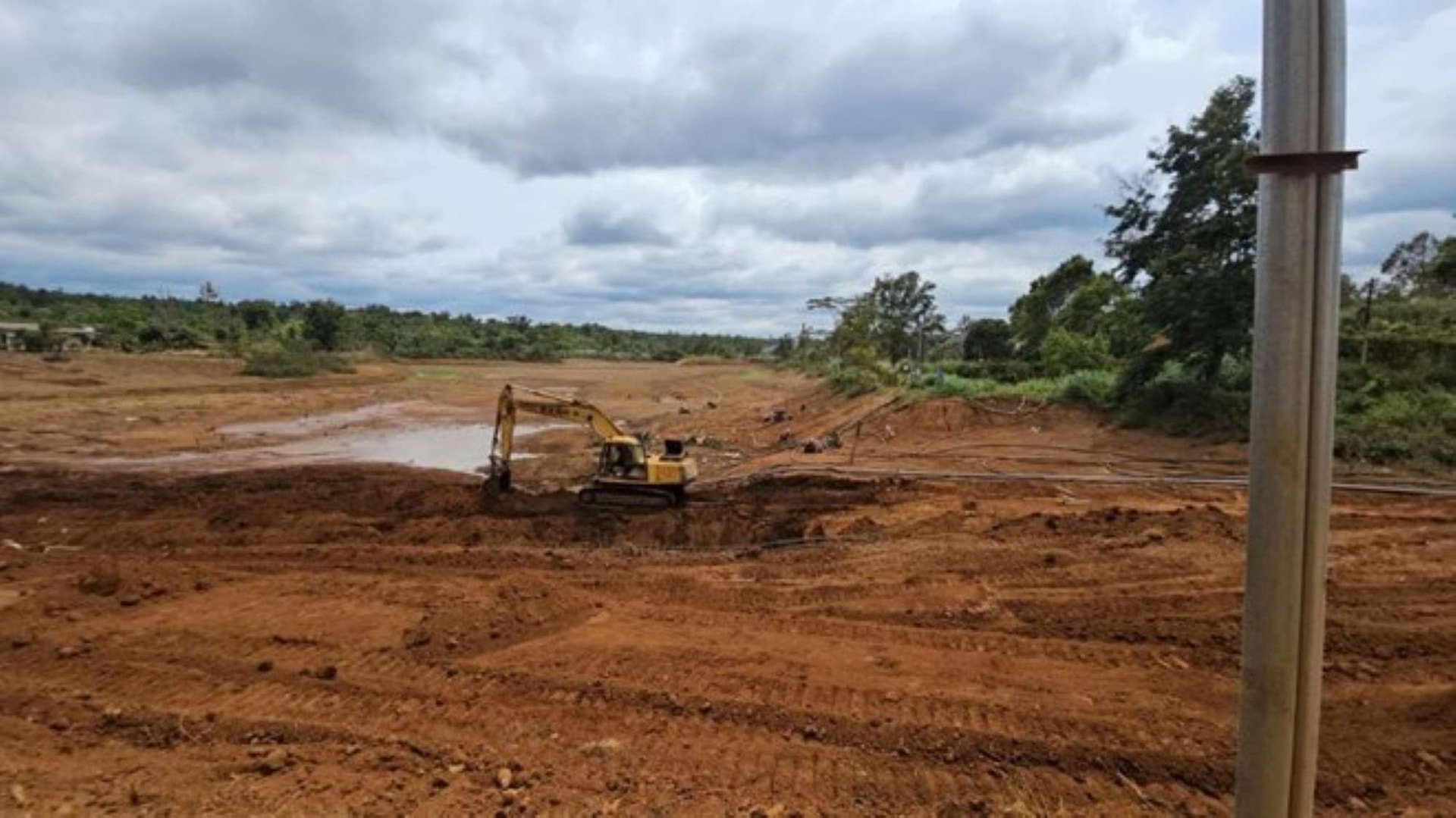
About 1,000 hectares of crops are at risk of drought and water shortage.
According to the Department of Irrigation Construction and Management, last week, the average capacity of irrigation reservoirs in the Central Highlands was only 36%, down 4% compared to the previous week. Specifically, Kon Tum was 39%, Gia Lai was 30%, Dak Lak was 33%, Dak Nong was 45%, Lam Dong was 67%. The whole region has 52 dry lakes, of which Kon Tum had 11 lakes, Dak Lak had 21 lakes, Dak Nong had 20 lakes.
In Gia Lai , 268.82 hectares of rice (1.1% of the total rice area of the province) are affected by drought, located outside the irrigation areas of the irrigation systems in Dak Doa, Chu Se, and Kbang districts. This area has been recommended not to be produced in the 2024-2025 Winter-Spring crop due to inadequate water resources.
In Dak Lao commune (Dak Mil district, Dak Nong province), there are currently about 200 hectares of coffee trees affected by drought and water shortage. If the weather does not improve and there is no rain in the coming time, more crop areas will face serious water shortages.
According to the National Center for Hydro-Meteorological Forecasting, the Central Highlands region is forecast to have hot weather with the highest temperature commonly ranging from 35-36 degrees Celsius, some places above 36 degrees Celsius, the lowest relative humidity is only about 45-50%. The hot weather in the region is likely to last for the next few days.
Based on weather forecasts and actual situations, the Department of Irrigation Works Management and Construction predicts that the peak of drought and water shortage in the Central Highlands will begin in late March, early April and is expected to end in early May 2025.
From now until the end of the 2024-2025 Winter-Spring crop, the area at risk of being affected by drought and water shortage in the Central Highlands is estimated at 500 - 1,000 hectares, including Gia Lai 100 - 400 hectares, Dak Lak 200 - 300 hectares, Dak Nong 200 - 300 hectares, mainly outside the irrigation system.
Building a drought warning dataset
Although it is the key agricultural economic region of the country, in the Central Highlands, only about 26% of the agricultural area is served by irrigation systems and the remaining 74% depends on natural rainwater. Of which, rice, coffee and pepper are the crops mainly affected by water shortage.
Speaking with Lao Dong, a representative of the Department of Irrigation Works Management and Construction said that right from the beginning of the peak of the dry season, the Department quickly organized a working group to inspect the drought and water shortage situation in the provinces of Dak Lak, Gia Lai and Kon Tum.
In recent times, the Department has continued to strengthen monitoring of meteorological and hydrological conditions provided by domestic and foreign meteorological and hydrological agencies; organized water resource forecasts, assessed the impact of drought and water shortage on agricultural production as a basis for organizing effective operation of irrigation works.
At the same time, it is necessary to closely coordinate with units managing and operating hydroelectric reservoirs to develop a reasonable water regulation plan, ensuring additional water sources for downstream areas in accordance with the water intake capacity of irrigation works and saving water from hydroelectric reservoirs. Prioritize domestic water supply and prepare plans to ensure minimum water supply for people at risk of water shortage due to the impact of drought.
The Ministry of Agriculture and Environment has coordinated with the Food and Agriculture Organization of the United Nations (FAO) to implement the project "Assessing the impact of drought in the Central Highlands" using remote sensing technology. The project is notable for building the WaPOR dataset for the pilot area, aiming to assess and monitor drought and water shortages affecting agricultural production through remote sensing technology.
According to Prof. Dr. Nguyen Tung Phong - Director of the Department of Management and Construction of Irrigation Works, the technical support project will help central and local management officials develop methods to monitor and forecast droughts and water shortages in a proactive and transparent manner, while creating a premise for replicating the application model nationwide. Having good forecasting and warning information and accurately assessing water demand is an important requirement in ensuring sustainable agricultural production.
Source: https://baodaknong.vn/han-han-o-tay-nguyen-co-the-ket-tuc-vao-dau-thang-5-250391.html


![[Photo] General Secretary To Lam receives Prime Minister of the Kingdom of Thailand Paetongtarn Shinawatra](https://vphoto.vietnam.vn/thumb/1200x675/vietnam/resource/IMAGE/2025/5/16/7f6a2a37f9324e61b3088c464cbc7b16)
![[Photo] President Luong Cuong receives Prime Minister of the Kingdom of Thailand Paetongtarn Shinawatra](https://vphoto.vietnam.vn/thumb/1200x675/vietnam/resource/IMAGE/2025/5/16/52c73b27198a4e12bd6a903d1c218846)



![[Photo] The Prime Ministers of Vietnam and Thailand witnessed the signing ceremony of cooperation and exchange of documents.](https://vphoto.vietnam.vn/thumb/1200x675/vietnam/resource/IMAGE/2025/5/16/935407e225f640f9ac97b85d3359c1a5)


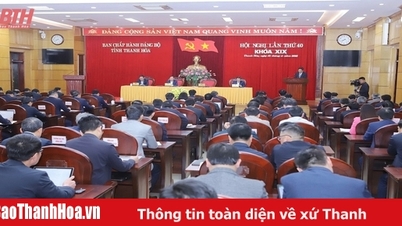








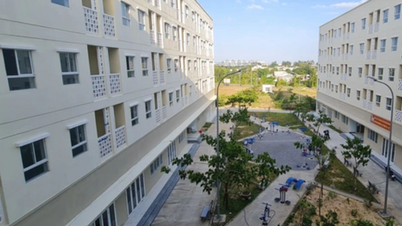











![[Photo] Prime Minister Pham Minh Chinh holds talks with Prime Minister of the Kingdom of Thailand Paetongtarn Shinawatra](https://vphoto.vietnam.vn/thumb/1200x675/vietnam/resource/IMAGE/2025/5/16/23b5dd1e595d429491a54e3c1548fb79)









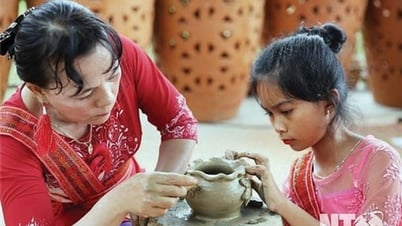





























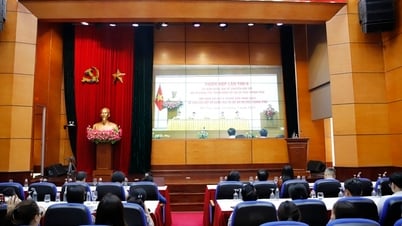





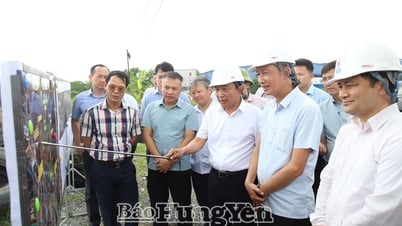

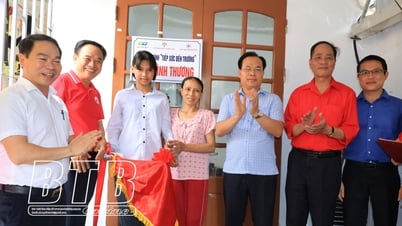

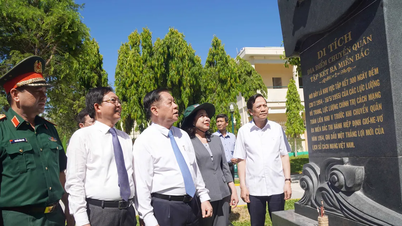

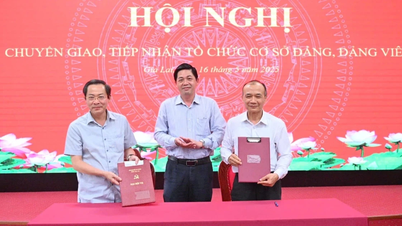











Comment (0)